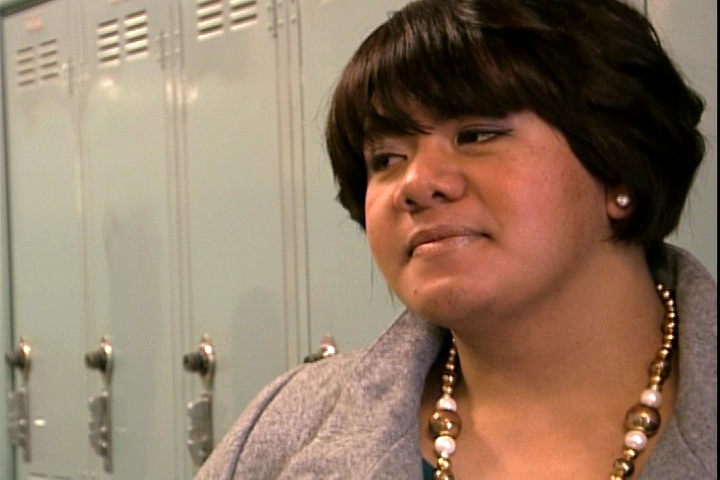Straightlaced: How Gender’s Got Us All Tied Up
 Miracles can happen. I have seen proof. An interesting and insightful documentary was made by someone who directs with complete condescension and an overabundance of obnoxious video effects.
Miracles can happen. I have seen proof. An interesting and insightful documentary was made by someone who directs with complete condescension and an overabundance of obnoxious video effects.
Consider the evidence: A filmmaker who treats sexually confused teenagers like Bill Cosby talks to five-year-olds on Kids Say the Darndest Things. Cutesy music and graphics that belong in a “The More You Know” PSA. Scene transitions that suggest the producers intended Straightlaced for a 2nd grade assembly, and that they think the best way to get their message across is to spell words like “kidz.” And what if the z were backwards? Wouldn’t that be hip and cool and groovy and swell and other pandering terms that Baby Boomers bring to the generations that follow them, generations that they obviously resent? And wouldn’t it be better if the teenagers were scripted, so we didn’t have to wait to for them say something profound and they can sound mature for their years, proving that after this gig is over, the producers could make great casting agents for expensive Hollywood projects? You know, fail upwards from this silly little 65 minute TV spot. And this black kid, you see him? He’s got Groucho eyebrows. He doesn’t have much to say, but look at them eyebrows.
 There’s no doubt that despite all the evidence above, the fact that Straightlaced is engaging is a miracle. Watching awkward teenagers trying to delve into their own curiosity, and utterly unintentional and entirely revelatory contradictions is fascinating. “I don’t care what others think, I just like being different.” “Why is it gay to ask yourself if you’re gay?” If there’s one thing director Debra Chasnoff got right, it was choosing the right age, 17-18 year olds, for her subjects, because while peer pressure has clearly taken its toll, the psychology of fear and intolerance that develops as one becomes an adult has not been set in stone. Hearing them sort out their own self-doubt and intelligence as it has been clearly battered by their parents, who are never shown, but it is implied that they have, follow old world thinking (it is a underlying suggestion that most of the kids have families that are immigrants, very conservative immigrants), makes those of us who have made up our minds on how we view gender distinctions, re-examine it. This is further developed with discussions of not just Barbie vs. GI Joe, but watching these kids struggle for something as minute as clothing choices. They wear that they wear solely to avoid being made fun of and to feel safe. It’s a delicate balance that they can’t always keep and those students who won’t accept them for who they are, don’t know why, but don’t care to think about it too much. You know, because thinking and being smart and having emotions… That’s just gay.
There’s no doubt that despite all the evidence above, the fact that Straightlaced is engaging is a miracle. Watching awkward teenagers trying to delve into their own curiosity, and utterly unintentional and entirely revelatory contradictions is fascinating. “I don’t care what others think, I just like being different.” “Why is it gay to ask yourself if you’re gay?” If there’s one thing director Debra Chasnoff got right, it was choosing the right age, 17-18 year olds, for her subjects, because while peer pressure has clearly taken its toll, the psychology of fear and intolerance that develops as one becomes an adult has not been set in stone. Hearing them sort out their own self-doubt and intelligence as it has been clearly battered by their parents, who are never shown, but it is implied that they have, follow old world thinking (it is a underlying suggestion that most of the kids have families that are immigrants, very conservative immigrants), makes those of us who have made up our minds on how we view gender distinctions, re-examine it. This is further developed with discussions of not just Barbie vs. GI Joe, but watching these kids struggle for something as minute as clothing choices. They wear that they wear solely to avoid being made fun of and to feel safe. It’s a delicate balance that they can’t always keep and those students who won’t accept them for who they are, don’t know why, but don’t care to think about it too much. You know, because thinking and being smart and having emotions… That’s just gay.



